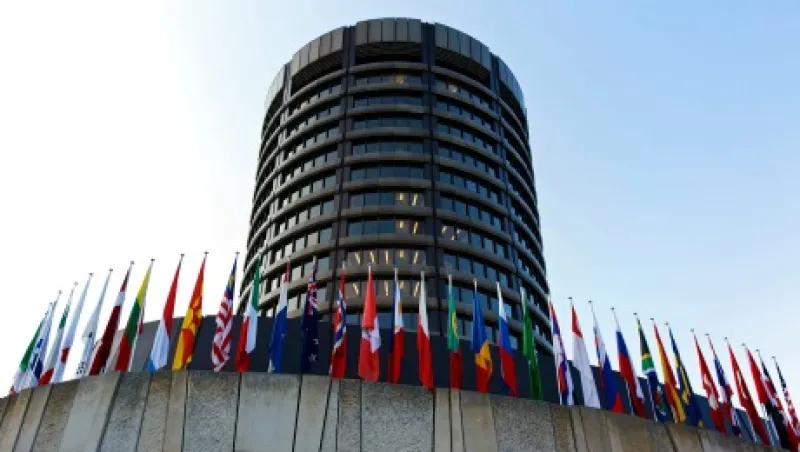The credit derivatives world is changing. Long considered a bogeyman of finance, credit default swaps (CDSs) have come through the financial crisis to prove their worth as indicators of financial health and as increasingly important tools in the hunt for yield.
According to the Bank for International Settlements (BIS), pension funds and insurance companies held $230 billion of notional outstanding CDS contracts as of June 2013, a figure broadly level with the year before. The key difference from previous years, however, is how these contracts are being used. Recently, CDS has become a speculative tool for investors to play short-term themes or get into hard-to-access markets rather than to hedge default risk. According to BIS figures, pension funds and insurers bought $66 billion of CDS protection in the first half of this year but sold $165 billion of CDS contracts to gain positive returns.
This is a significant step in the evolution of the market. “The CDS market has evolved; it has had its tests and gone through the credit crisis,” says Roger Sadewsky, investment director and co-manager of the Absolute Return Global Bond Strategies Fund at Edinburgh, Scotland–headquartered Standard Life Investments. “In an environment where credit is tightening, CDS provides a good play on short-term opportunities by accessing debt maturities or names which you can’t in cash or to quickly get in and out of positions.”
But the situation is just on the verge of taking off. In March the International Swaps and Derivatives Association (Isda) will launch its biggest overhaul of CDS contracts in ten years, a major initiative expected to boost buy-side volumes even more in the coming years.
The shake-up in documentation comes at a time when dislocations in normal market practices — in particular sovereign defaults in Europe and bank bail-ins — weigh on the bond markets and have a negative effect on CDS holders. Earlier this year, for example, Dutch bank SNS Reaal was nationalized, and buyers of subordinated debt protection walked away with very little compensation for losses experienced after the government expropriated the bank’s subordinated bonds.
“The idea is that the bond markets have changed significantly over the last few years, and investors want protection against expropriations, such as happened with SNS,” says Saul Doctor, a credit derivatives strategist at JPMorgan Chase & Co. in London. “The key aim is to try and ensure that CDS replicates the dynamics of bonds as much as possible.”
There are two main changes to the contracts. First, a new trigger is being introduced for financial CDSs to deal with SNS-type expropriations. In the future protection buyers will be compensated for the loss associated with a governmental bail-in through the ability to provide a wider pool of assets for delivery against default compensation. The second initiative has been to expand the range of deliverable obligations in case of a sovereign default, including equity or gross domestic product warrants that will allow investors to more accurately hedge domestic law bonds. This initiative has been warmly welcomed by the market.
“Isda definitions will change in March, which we anticipate will bring liquidity to the market,” says Gavan Nolan, director of credit research at financial information services company Markit in London. “This is closing loopholes, especially around sovereign debt restructuring and bail-in of banks. When that is fixed, we will likely see more buy-side participants who have been critical of documentation enter the market.”
But why is this particularly important now? The answer is that analysts believe that CDSs are likely to grow in importance for hedging, as risk returns to the market.
“Over the next few years, as you see investors releveraging and taking on more risk, there will be an increased need to hedge, and these changes are a real positive for the comfort and confidence of the end-investor,” says Doctor.
The other major boost to the CDS market under way in the U.S. and soon to be in place in Europe is central clearing. In March the U.S. implemented centralized clearing, as mandated by the Dodd-Frank Wall Street Reform and Consumer Protection Act of 2010. From a standing start, the derivatives exchange IntercontinentalExchange (ICE), the world’s largest clearinghouse for credit default swaps, has cleared $3.57 trillion in buy-side gross notional CDS volumes in the U.S. during 2013, compared with just $100 billion in the previous years since its launch in 2009.
The market will see the impact of European Market Infrastructure Regulation (Emir) directives next year, when a new wave of CDS centralized clearing hits the European institutional business and further boosts institutional involvement in the market.
“Emir has the potential to reinvigorate the CDS market by bringing in more liquidity into single names,” says Nolan. “Though the transaction costs associated with central clearing can have a negative impact, the overall sentiment to central clearing is positive.”
So expect to see more mandates as institutional investors gradually reaffirm their faith in CDSs.






